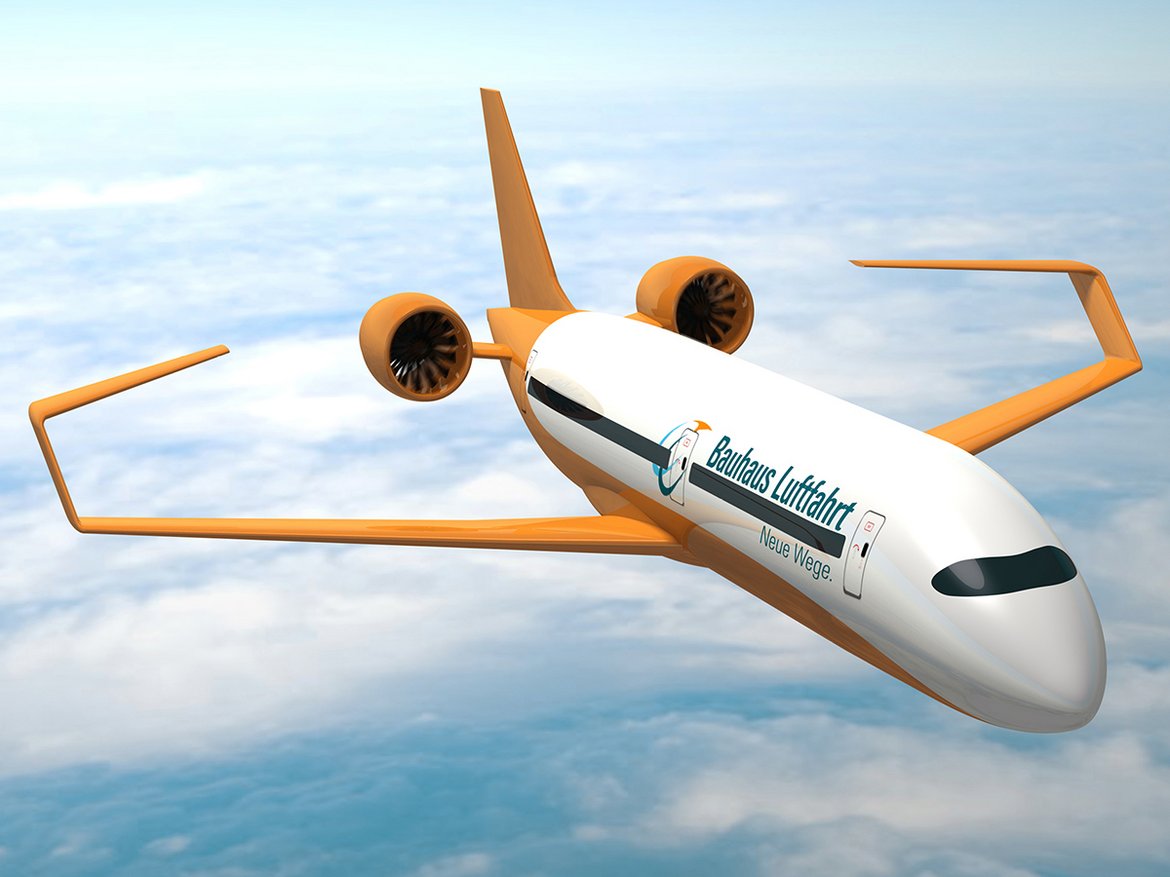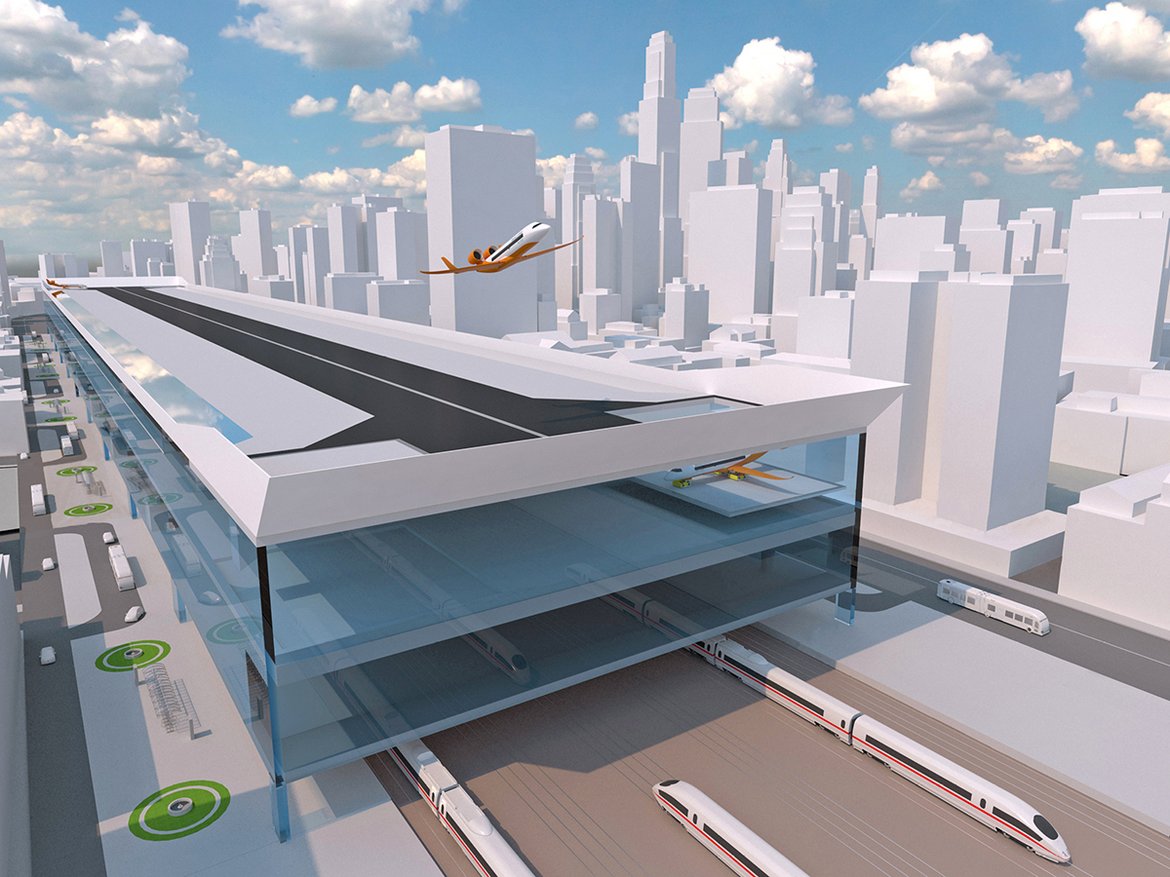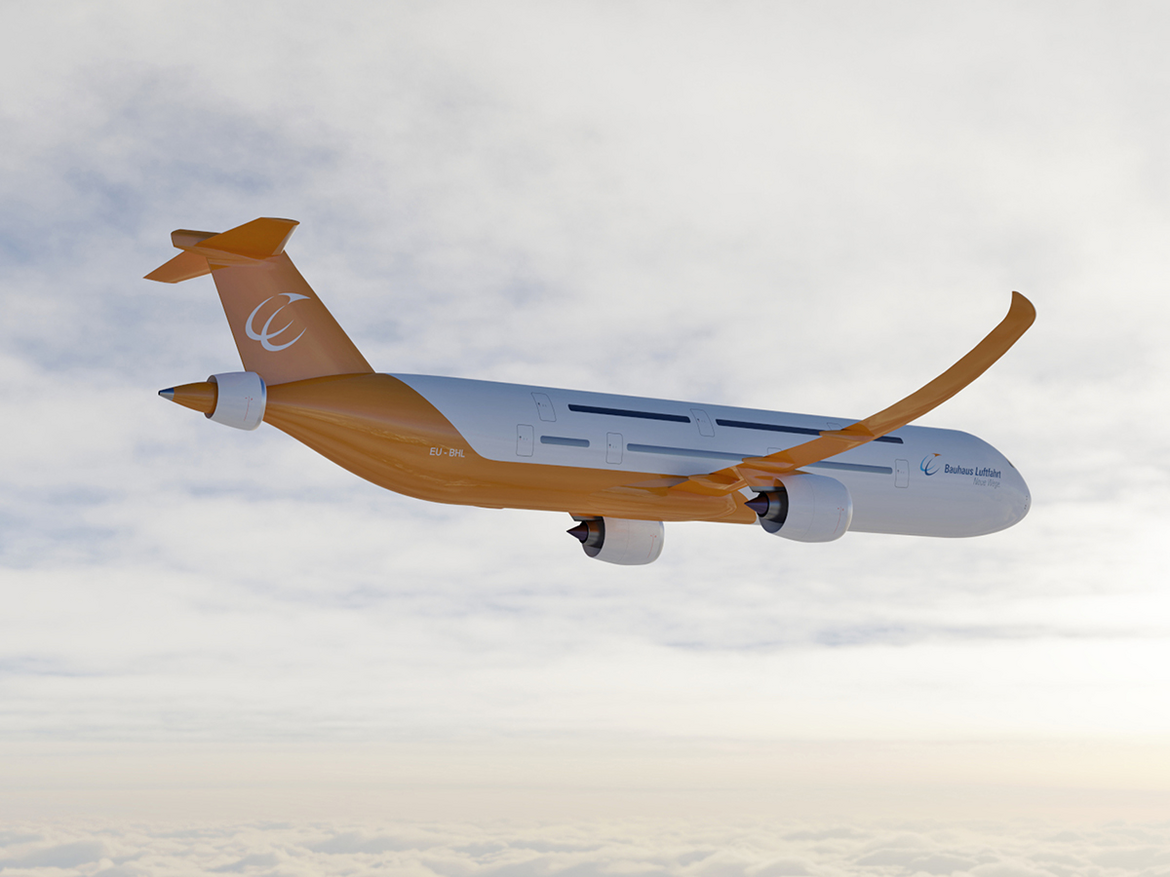Our Approach
Bauhaus Luftfahrt (BHL) is dedicated to researching long-term drivers of aviation, breakthrough technologies, and integrated air transportation system concepts for sustainable and climate-neutral air transport. A significant aspect of the integrated conceptual design work involves initial technical assessments that bring together the various in-house research disciplines. The development of transport concepts, including conceptual aircraft design, poses not only technical but also organisational challenges. In particular, integrating unconventional components into novel system architectures necessitates rapid design iterations that incorporate revisions to socio-economic or ecological requirements. In order to coordinate BHL’s inter-disciplinary research portfolio, new ways of collaboration e.g. applying agile methods within our so-called Group Design Projects are continually evaluated.
Our Goals
Within the frame of our Group Design Projects – enabled by our institutional public funding – BHL better understands the future challenges and their environment. BHL develops methods and tools to assess novel technologies at a conceptual level. The interdisciplinary nature of the Group Design Projects enhances interfaces and communication between socio-economic factors, technologies and engineered concepts, providing a testbed for advanced models for inter-disciplinary collaboration. The results of a Group Design Project serve as a catalyst for future research questions and act as show cases for novel concepts to be presented to the public and scientific community.
Our results
The “Hy-ShAir” concept: Re-thinking the future of long-haul aviation (2019)
Focusing on aviation’s contribution to reducing overall emissions, the 2019 group design project Hy-ShAir addressed the long-haul air transport market by incorporating both operational and technical innovations. Bauhaus Luftfahrt combined radical approaches by introducing an open “Seat Exchange Platform” called “ShAirline”, which redefines the classic airline-aircraft ownership relationship with an aircraft concept Hyliner (2.0) using liquid hydrogen (LH2) as the energy source.
“CentAirStation” airport concept and “CityBird” aircraft concept: Re-thinking future of regional mobility (2016)
In collaboration with Glasgow School of Art, Bauhaus Luftfahrt developed a well-matched airport and aircraft concept in 2016: “CentAirStation” and “CityBird”. These innovative inner-city airports utilise valuable urban brown spaces that are currently only occupied by rail tracks. The aircraft “CityBird” has been specifically designed for inner-city operations with high requirements on noise protection, safety and short take-off and landing capability (STOL). Both synergistic concepts enable regional operations between these new inner-city airports as well as conventional airports.
The “Ce-Liner” concept: Understanding technological requirements for zero inflight emission aircraft (2011)
In 2011, Bauhaus Luftfahrt utilised the agile product development method Scrum to conduct a comprehensive concept study of an in-flight zero-emission aircraft solution named “Ce-Liner” within the group design project. The key innovation of Ce-Liner lies in its propulsion system, which incorporates high-temperature superconducting electric motors fed through a universally electric systems architecture. Energy for the aircraft is supplied by advanced lithium-ion batteries. Through this project, BHL gained a deep understanding of the technological requirements for an aircraft with zero in-flight emission serving a market segment which has a relevant climate impact.




